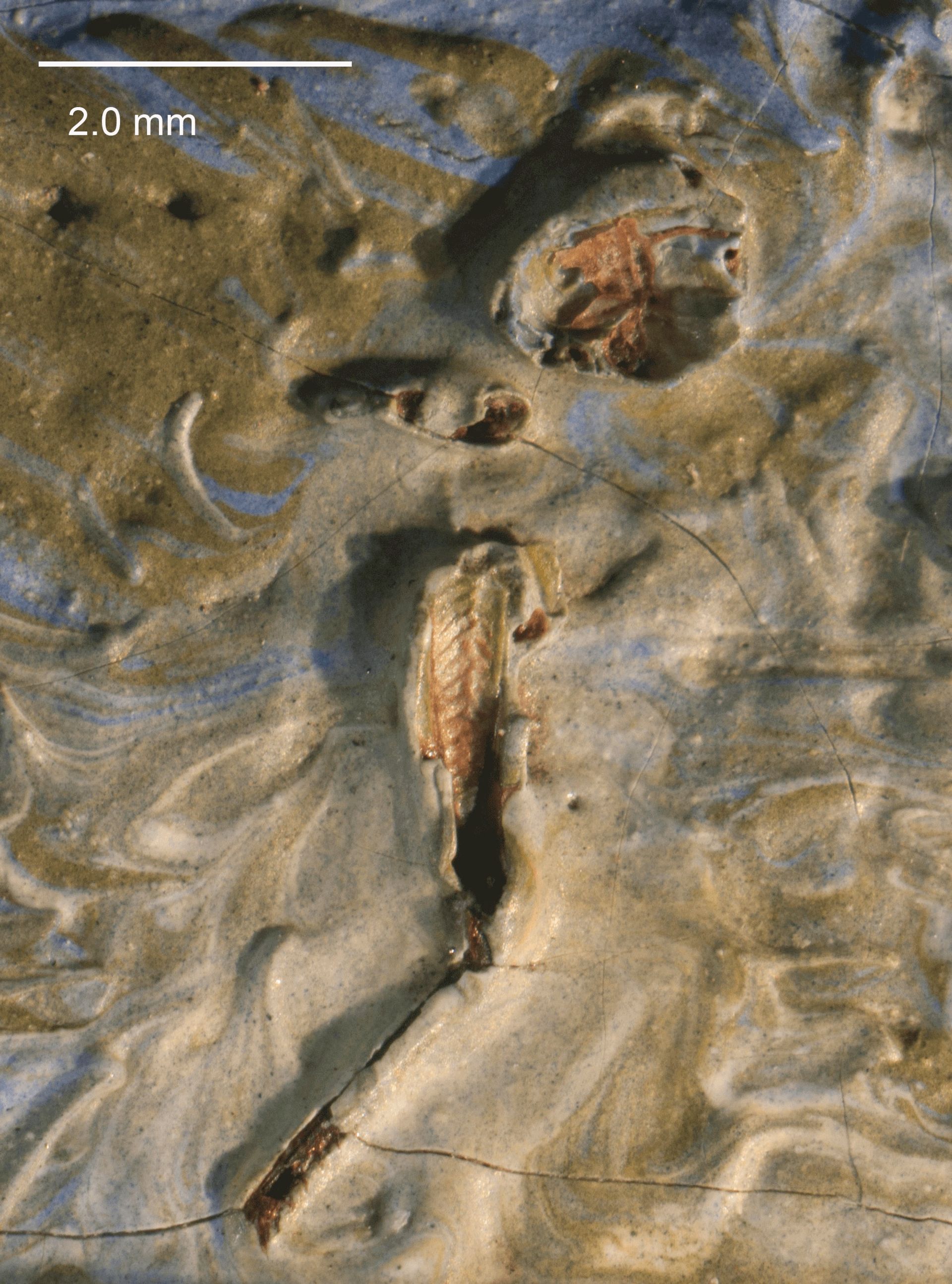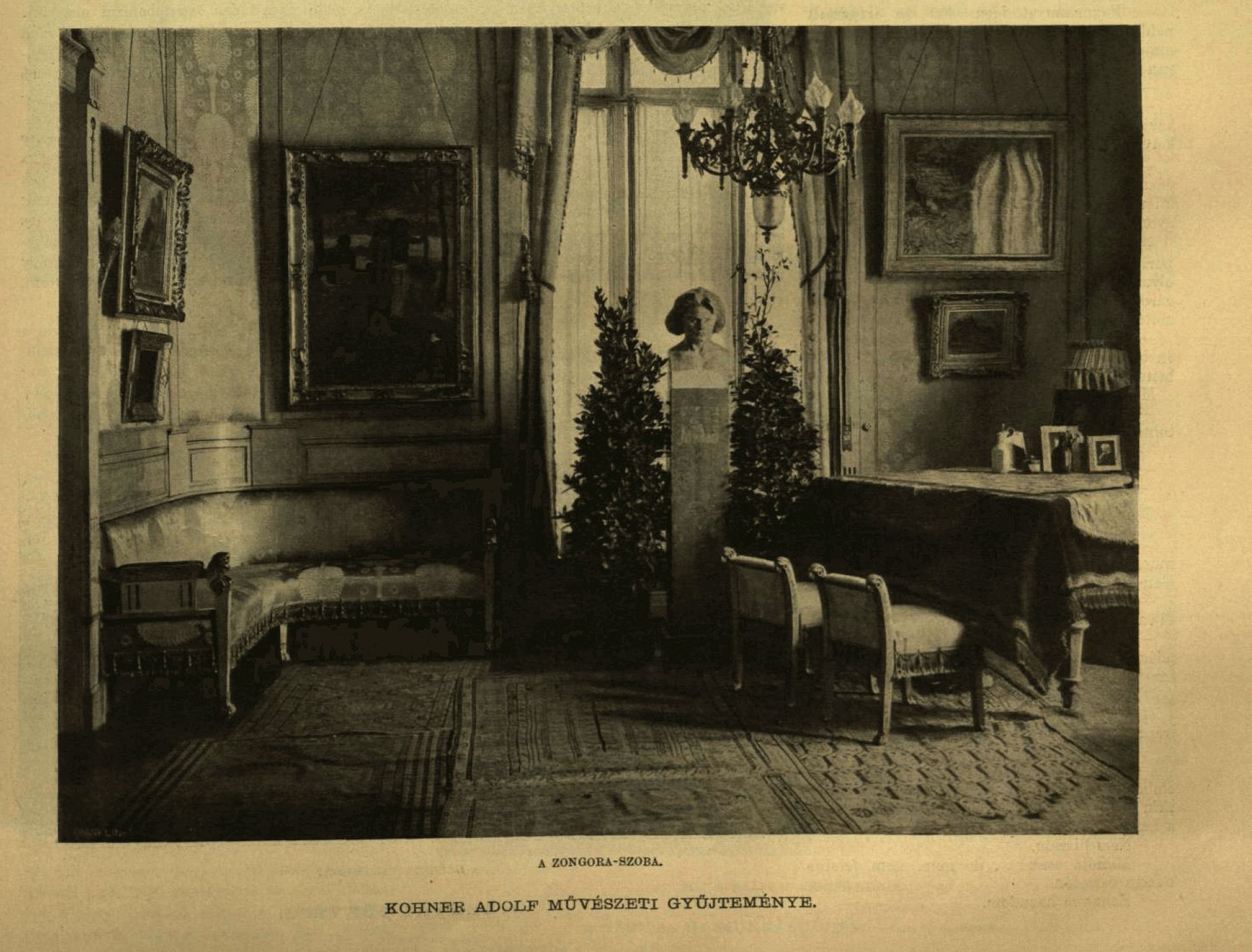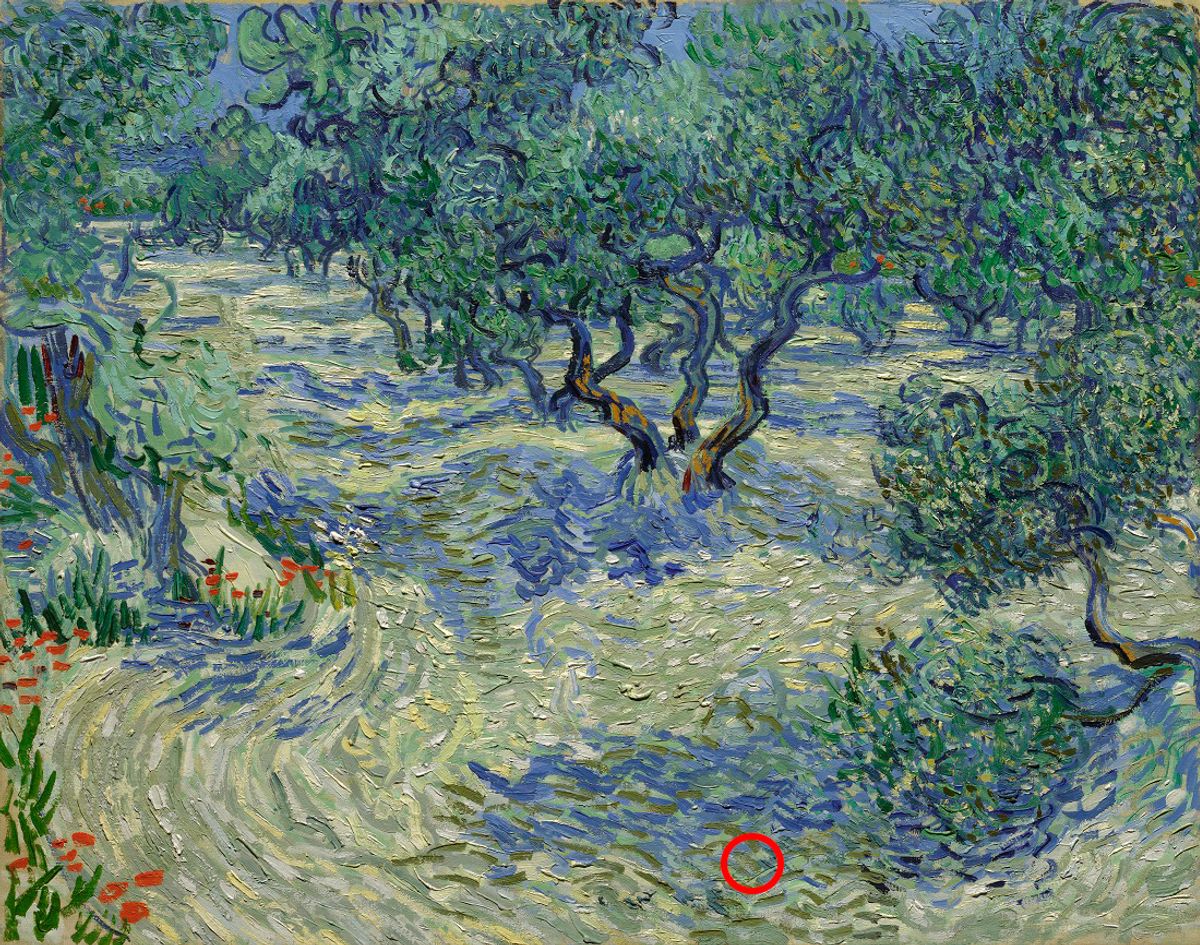Vincent van Gogh was painting in an olive grove when a grasshopper blew onto his wet paint. He either didn’t notice—or perhaps didn’t care—and carried on, producing one of the finest landscapes he painted just outside the walls of the asylum where he was living.
The painting, Olive Trees (1889), is at the Nelson-Atkins Museum of Art in Kansas City, Missouri. It is now among the first French pictures to be featured in the museum’s new online catalogue, in which it is the subject of a 28-page study.
When Vincent agreed to move to the asylum just outside Saint-Rémy-de-Provence in May 1889, after mutilating his ear, he made two conditions. As his brother Theo told the asylum director, Vincent should have “at least 1/2 litre of wine with his meals” and “the freedom to paint outside the institution”.
A month after arriving he was allowed outside the asylum walls, immediately discovering the ancient olive groves which lay beneath the hills of Les Alpilles. Struck by their gnarled and twisty trunks and glimmering leaves, he painted the work that is now in Kansas City.
Conservators at the Nelson-Atkins have been studying Olive Trees, in association with the Van Gogh Museum, to prepare for an exhibition which will be held in Amsterdam and Dallas. This has involved eight years of research on the painting, which now makes it possible to track how the artist worked on it.

Enlarged image of a grasshopper’s head and hind leg on Olive Trees Courtesy of the Nelson-Atkins Museum of Art, Kansas City, Missouri
Using a powerful microscope, conservators discovered the head and a hind leg of a grasshopper entombed in the paint of the foreground, just to the right of the centre. It is hardly visible to the naked eye. There was no disturbance to the paint, which would have occurred if a live insect had got stuck, so it was presumably dead on arrival.
The Rhône Valley has an extremely strong wind, the mistral, which often made it awkward for Van Gogh to paint outside. But he would persevere in windy conditions and it was probably a mistral that blew the dead grasshopper onto his canvas. That summer Vincent had written about painting in the groves with great numbers of insects “flying in the heat”.
Olive Trees is painted in his typical thick impasto technique, so the dead insect just added a little more bulk to the picture surface. The Nelson-Atkins Museum conservator Mary Schafer and her colleagues also found plant material, which remains unidentified, blown into an area of blue paint.

Enlarged image of plant material on Olive Trees Courtesy of the Nelson-Atkins Museum of Art, Kansas City, Missouri
The Nelson-Atkins Museum catalogue reveals that the painting was completed in two stages. Most of the work was done outside, in early June. Van Gogh then suffered a mental attack the following month and he could only resume work in September. Conservators found that he then added the finishing touches, including some short dabs of fresh yellow paint on the trees.
Vincent described his way of working in a revealing letter to his brother in September: “Out of doors, exposed to the wind, the sun, people’s curiosity, one works as one can, one fills one’s canvas regardless. Yet then one catches the true and the essential.”
Then there was a second stage, when Vincent returned to the canvas, most likely in the cell which served as his studio. One “orders one’s brushstrokes”, making the painting “more harmonious and agreeable to see, and one adds to it whatever one has of serenity and smiles”. This is what he did with the Nelson-Atkins Museum's Olive Trees.
Conservators have determined that the colours we see now have altered, as they have in so many of Van Gogh’s paintings. The geranium lake red pigment beneath the trees has faded nearly to the point of invisibility, turning his violet shadows blue.
Describing a similar olive grove scene done at around the same time, Vincent told his sister Wil how the trees “cast shadows violet on the sun-drenched sand”. The violet was intended to represent a complementary contrast with yellow-orange strokes in the tree trunks.
Vincent sent Olive Trees to Theo in Paris, and his widow Jo Bonger eventually sold it in 1905. Five years afterwards it was bought by Adolf Kohner, one of Hungary’s richest men, whose wealth came from agriculture and banking. He hung the painting above the piano in the music room of his Budapest mansion. It is one of the few Van Goghs to be photographed in situ by 1911. Kohner sold the Van Gogh in 1930 in order to buy three slightly more modern paintings, by Redon, Braque and Derain.

Olive Trees above the piano (with light reflected on it) in the residence of Adolf Kohner, Budapest (published in Vasárnapi Ujság, 30 April 1911) Courtesy of Nelson-Atkins Museum of Art, Kansas City, Missouri
In 1932, Olive Trees was bought for the Nelson-Atkins Museum from New York’s Durand-Ruel gallery, the year before it opened to visitors. It was only the second Van Gogh to enter a US museum.
We can report that Olive Trees has now been promised for two major exhibitions, both of which will will be shown in the US. Van Gogh and the Olive Groves is scheduled for the Dallas Museum of Art (17 October 2021-6 February 2022), with the show hopefully opening before that at Amsterdam’s Van Gogh Museum (18 June-12 September 2021), Covid-19 allowing. The painting will also play a starring role in Van Gogh in America at the Detroit Institute of Arts (2 October 2022-22 January 2023).




